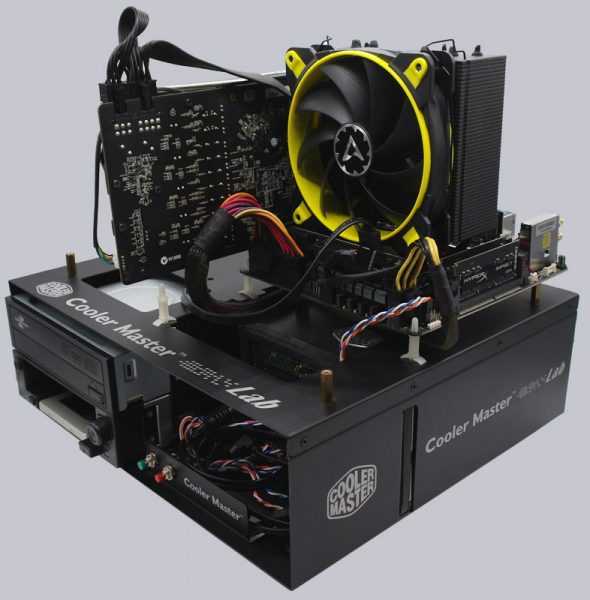
Test setup and results …
Test setup …
The following ITX configuration is used as test system:
Intel Core i9-7900X Default @ 3300 MHz at approx. 1.065 Volt
ASRock X299E-ITX/ac
4x 8GB DDR4-2400 CL15 Kingston HyperX SODIMM
MSI Radeon R9 280 Graphics Card
Cooler Master Silent Pro M 600W power supply unit
Cooler Master Test Bench v1.0
Windows 10 Pro 64 Bit and Microsoft Windows 7 Ultimate 64 Bit
For measurement, the following tools were used: Prime95 V28.7 and Intel XTU
Thermal compounds: Arctic MX-4 (included in delivery)
The ambient temperature during the test was about 21°C.
The following picture shows a thermal image of the ASRock X299E-ITX/ac test system with the Arctic Freezer 33 eSports One cooler.
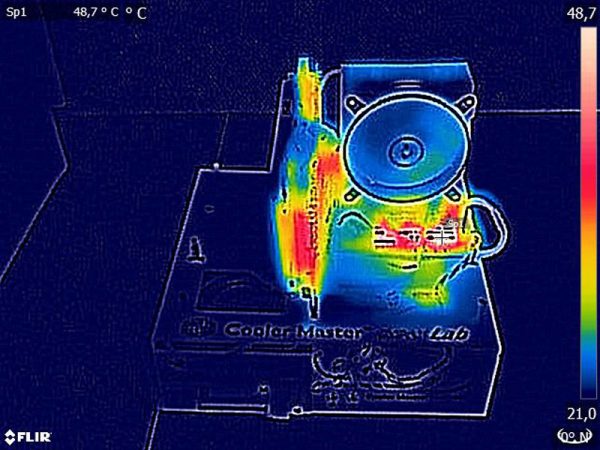
And here is an image of the heat distribution on an ASRock X299 Taichi ATX motherboard.
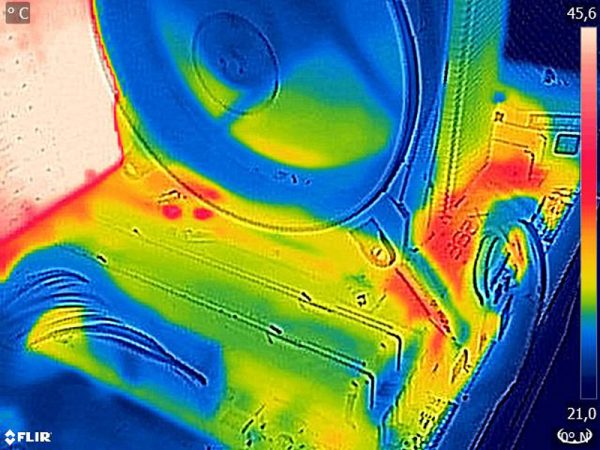
We first tested the Intel Core i9-7900X CPU without overclocking with the cooler at 3300 MHz and approx. 1.065 Volt VCore in idle at standard and maximum speed. Afterwards we loaded the Intel Core i9-7900X CPU with Prime95 and quoted the temperature, so that with a limited power supply about 140 Watt TDP is reached.
Incidentally, the Intel Core i9-7900X CPU is a processor with 10 cores, a flagship!
95 Watt TDP has in comparison an Intel Core i7-8700K CPU with 6 cores or an AMD Ryzen 7 1800X CPU with 8 cores.
65 Watt TDP would have an Intel Core i5-8400 CPU with 6 cores or an AMD Ryzen 5 1600 CPU with 6 cores.
But we are here at OCinside.de and want to test the cooler with CPU overclocking. However, it wouldn’t have made much difference if we had simply increased the clock rate or CPU voltage, because then Power or Current Limit Throttling would limit the maximum power to 140W TDP.
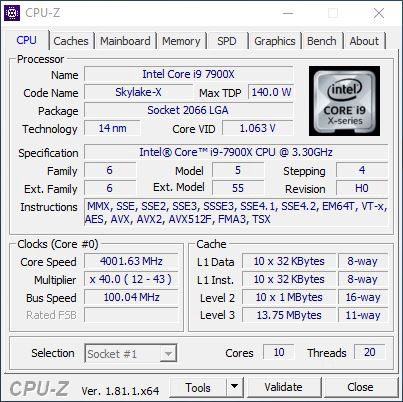
That’s why, without further ado, we overclocked the Intel Core i9-7900X CPU to 4 GHz at full load and Current Limit, Short Duration Power Limit and Long Duration Power Limit on Unlimited to reach about 160W TDP.
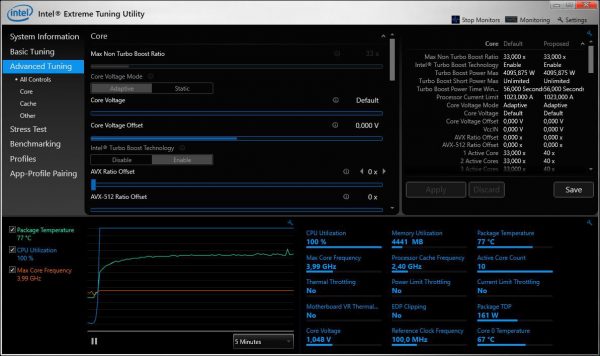
And for absolute load we overclocked the Intel Core i9-7900X CPU to 4.4 GHz at maximum load Current Limit, Short Duration Power Limit and Long Duration Power Limit to Unlimited to achieve about 200W TDP. The voltage regulators and the CPU are heavily loaded or overloaded. What is it all about: don’t do it!
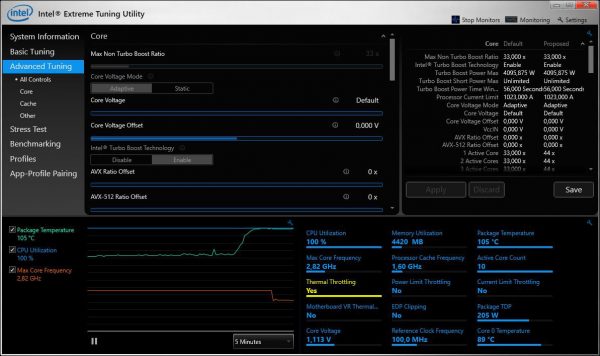
We measure the fan sound with a dB meter from a distance of 100cm. In addition, we determine the respective speed. Due to the 3-phase motor, the fan output shows incorrect values via the speedometer signal and are usually not recognized correctly by the 3-phase instead of the 2-phase. All speeds are therefore displayed approx. 50% higher and fan controls must be adjusted accordingly.
Arctic Freezer 33 eSports One results …
The following Arctic eSports One diagram shows from top to bottom the results of the Intel Core i9-7900X CPU at 3.3 GHz in idle with measured 2087 rpm (equivalent to approx. 1400 rpm), including at 3.3 GHz in idle with a maximum speed of 2909 rpm (equivalent to approx. 1900 rpm), then with Prime95 load, then with 4 GHz without power limits and last but not least with 4.4 GHz without power limits.
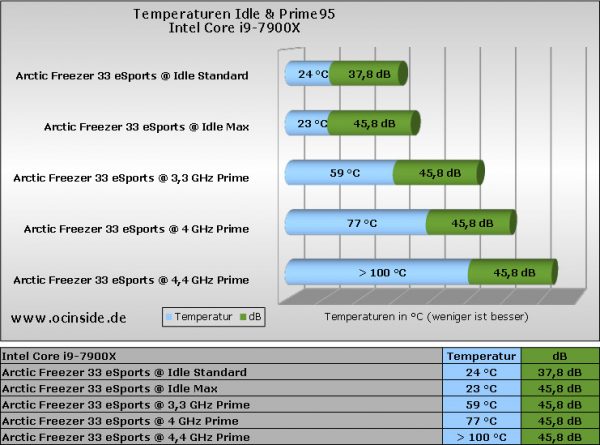
You can see how the package temperature of the processor can rise to more than 100°C in extreme cases, whereby Intel takes a throttle (Thermal Throttling) to protect the CPU from 105°C upwards. The 140W TDP (Thermal Design Power) is easily achieved by the Arctic Freezer 33 eSports One, only with high overclocking it becomes critical.
We explained the differences in measuring CPU temperatures and how to overclock in detail in our Intel Core i3, Core i5 and Core i7 OC guide.
Arctic Freezer 33 eSports One conclusion and overall impression …


